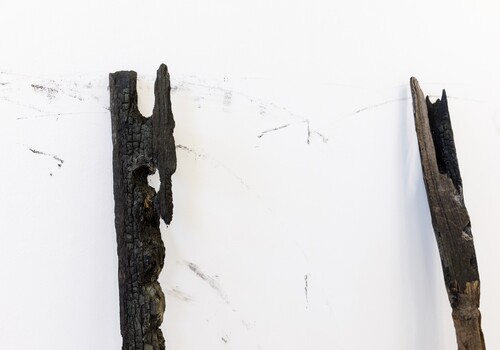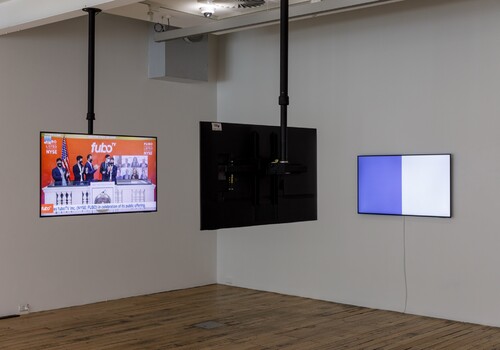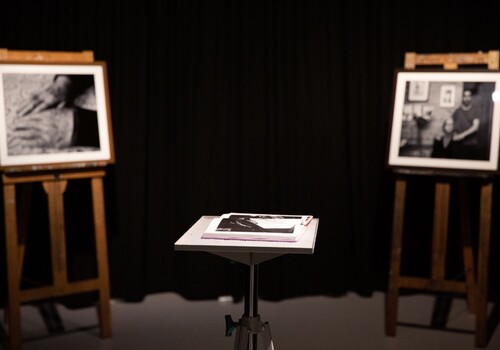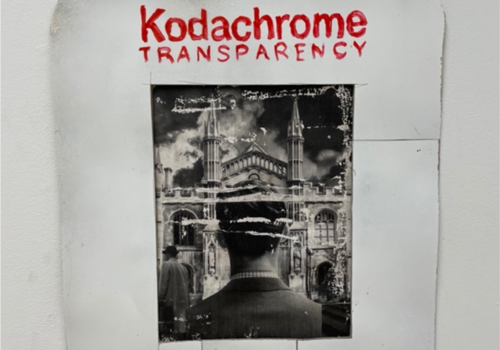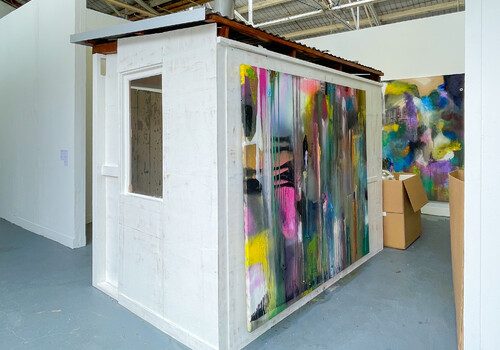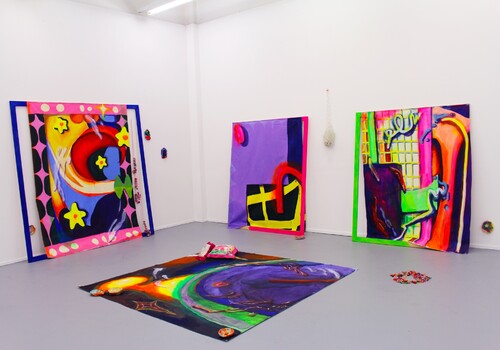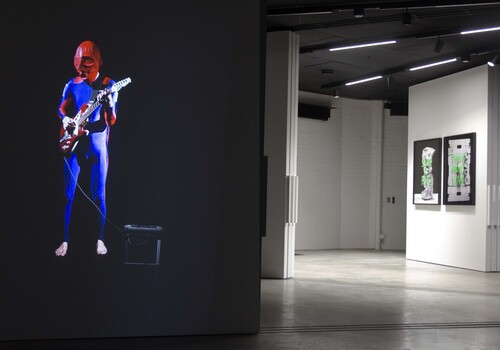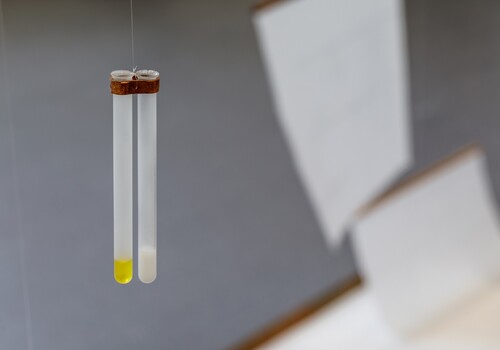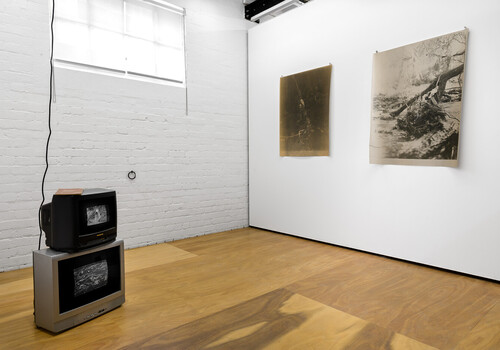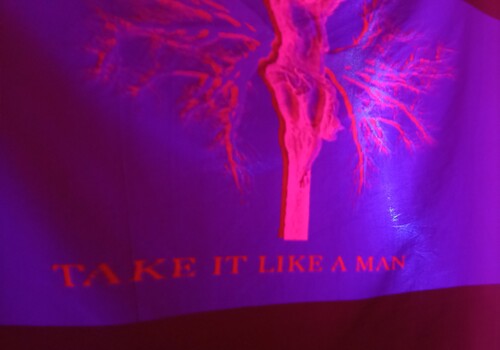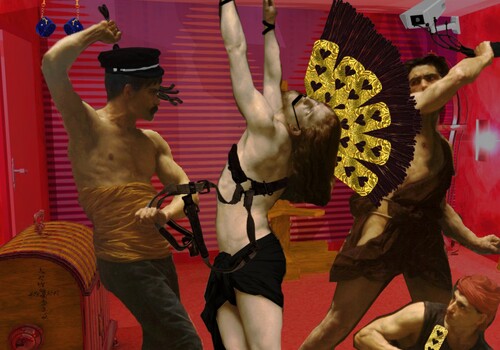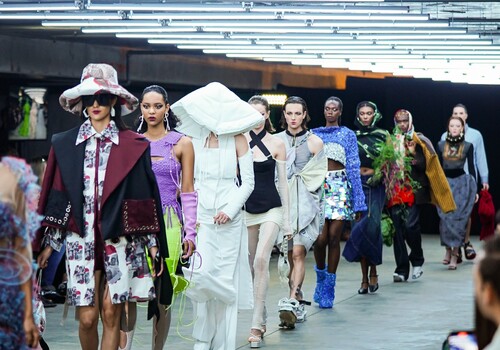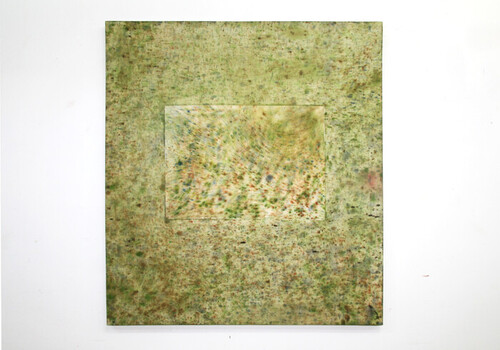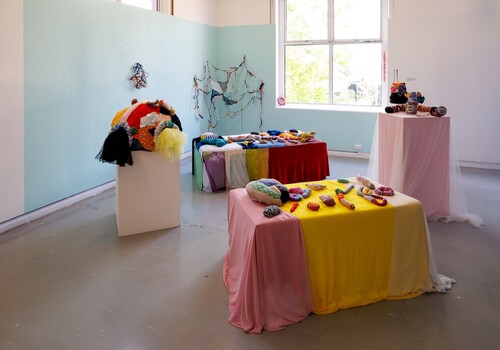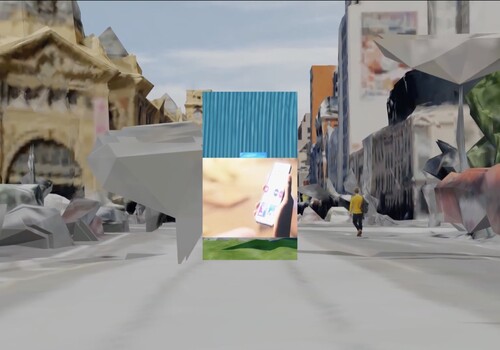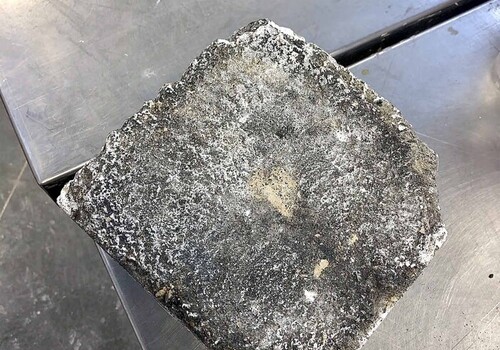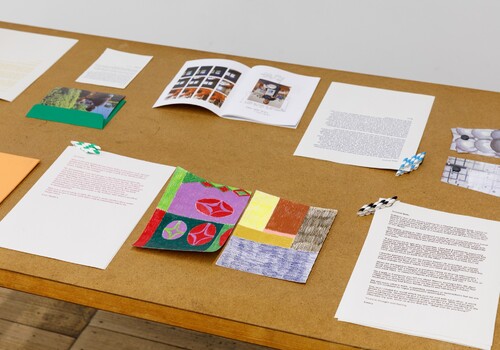Sculpture, Victorian College of the Arts
By Camille Orel
There is an intruder in our midst. At the doorsteps of the sculpture shed of the VCA grad show, Aden Miller and Josh Krum have brought the gallery to the art school. The two artists have reconstructed a replica of their own house gallery (Asbestos, a shed out the back of their Carlton-North share house) inside the Victorian College of the Arts.
This shed inside a shed, this institution inside an institution, is a paradox at the boundaries of the art system. Its dilemma is particularly relevant in the context of grad-show season. The school temporarily transforms itself into a gallery to present its graduating class to the art-going public. The very nature of the show blurs and confirms the institutional boundaries that exist in the contemporary art world. But by declaring themselves as already institutionalised figures, Krum and Miller’s critique is a critique from within, to borrow a phrase from Boris Groys. It is a sentiment that both informs and negates their position as professional (or to stay with Groys, a “de-professional”) artists. Has Krum and Miller’s artist-run gallery inside an academy caught them in an unavoidable institutional bind?

Asbestos sits in the centre of the studio, both gallery and sculpture. As I walk around the dislocated structure, I notice in its spatial distortion that the work has created a kind of hallway around the studio, whose walls are lined with the two artists’ works. Forced into close proximity, I consider Krum’s large-scale Untitled canvas that hangs on the outside of Asbestos from a closeness that, at times, immerses my entire visual axis onto a single piece of art. All I can think to myself is, how the hell would all this art fit inside that tiny gallery?
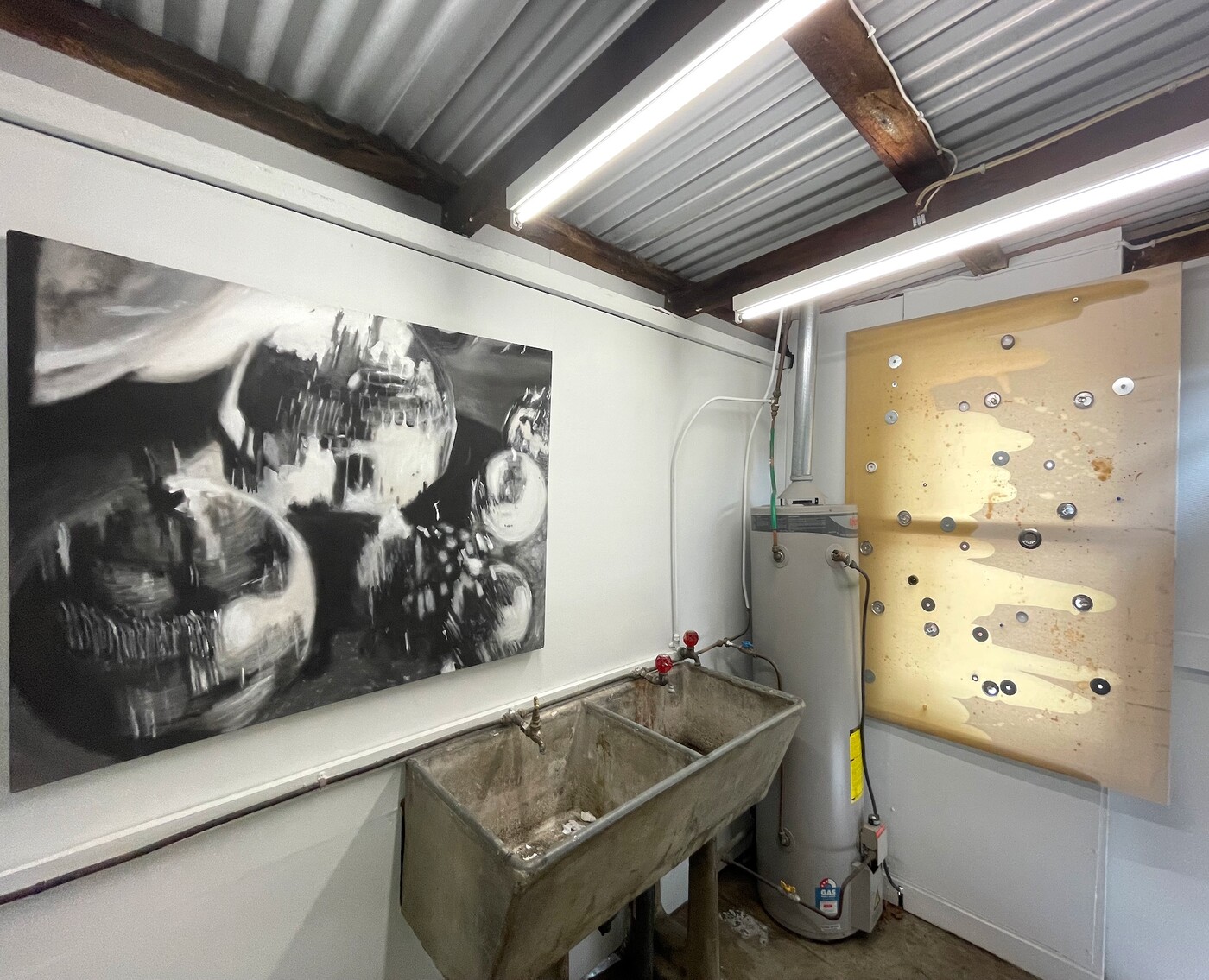
Continuing through this corridor I am hit with the stinky, sticky, sickly sweetness of motor oil emanating off Krum’s canvases. The stench eventually morphs into a reeking faux-gasoline that radiates from around the corner off of Miller’s coronary-shaped sculpture, Something Hollow Forced into Articulation. Yep. These fragrance notes would fit in perfectly with Commes des Garçons’ ludicrously grunge “Series 6 Synthetics” perfume line (along with “Tar”, Garage” and “Soda” Eaux de Toilettes). The smells unite in a way that reiterates the confinement of the space. They even perhaps narrow the hallway and enlarge the tiny shed-gallery that could barely contain the two boxes of disco balls (Untitled) that sit outside its walls. They are like the junk that sit in my shed. These aromas, the glowing yellow from inside Miller’s opaque sculpture, the dripping pinks, greens and yellows of Krum’s oil paintings, which have sweated a luminous toxic residue over the studio floor, all combine into one great artificial concoction. It is a deliberately synthetic environment. Much like a perfume being sprayed onto skin, it transforms into something organic and palpable once a person enters the space.
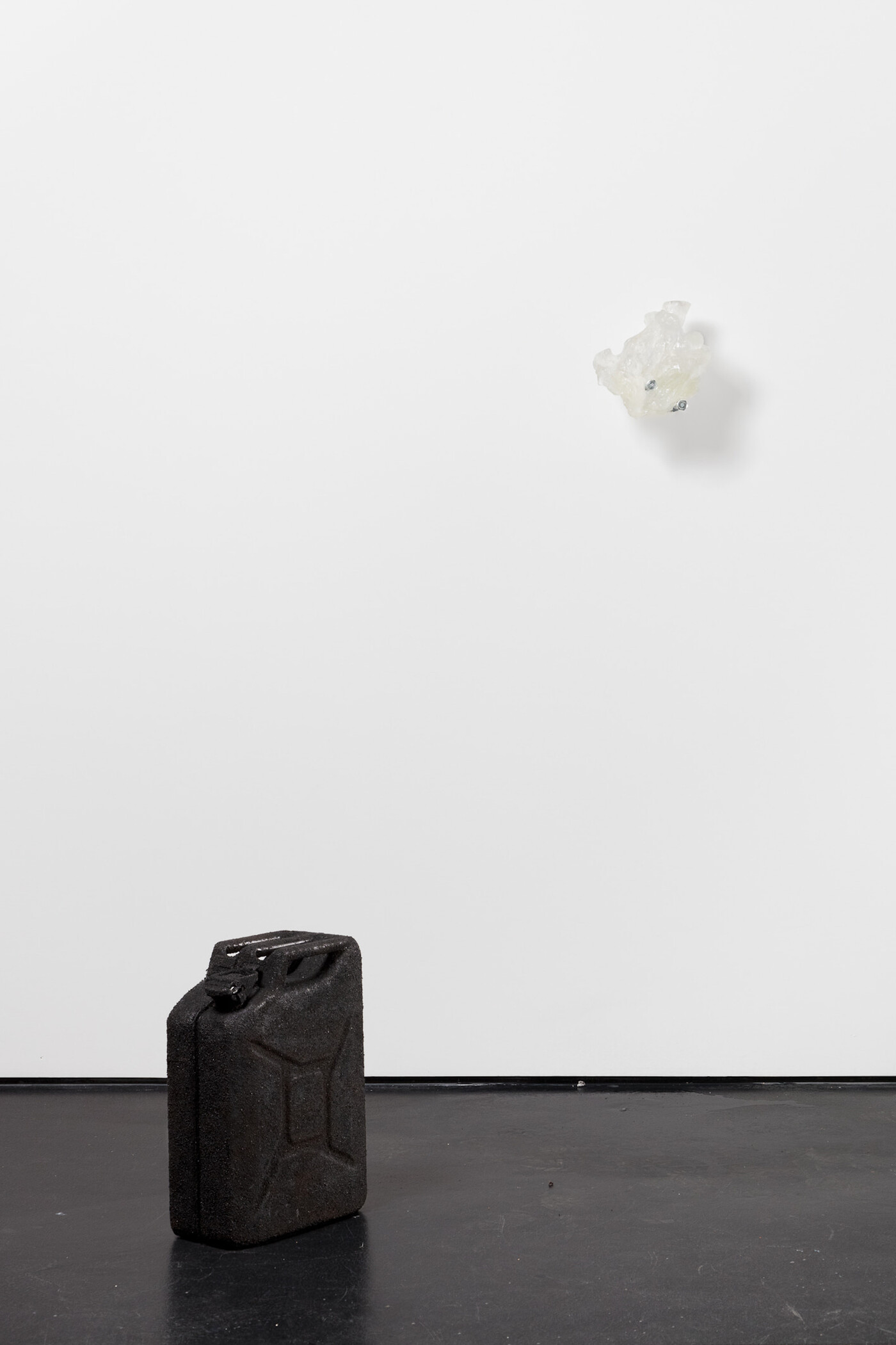
This transformation is confirmed by Miller’s burlap and aluminium works, whose soft-core industrial materiality invokes the tactile prerequisite to such a deliberately sense-provoking atmosphere. The stiffened burlap suggests a cocoon-like protection, and the aluminium a clad armour that quietly glistens in harmony with Krum’s florets of disco balls just down the hall. The individual sculptures in which these materials are fused are a synecdoche of the space I am standing in. Seemingly unsuitable sites become useable by the very fact of their connectedness.
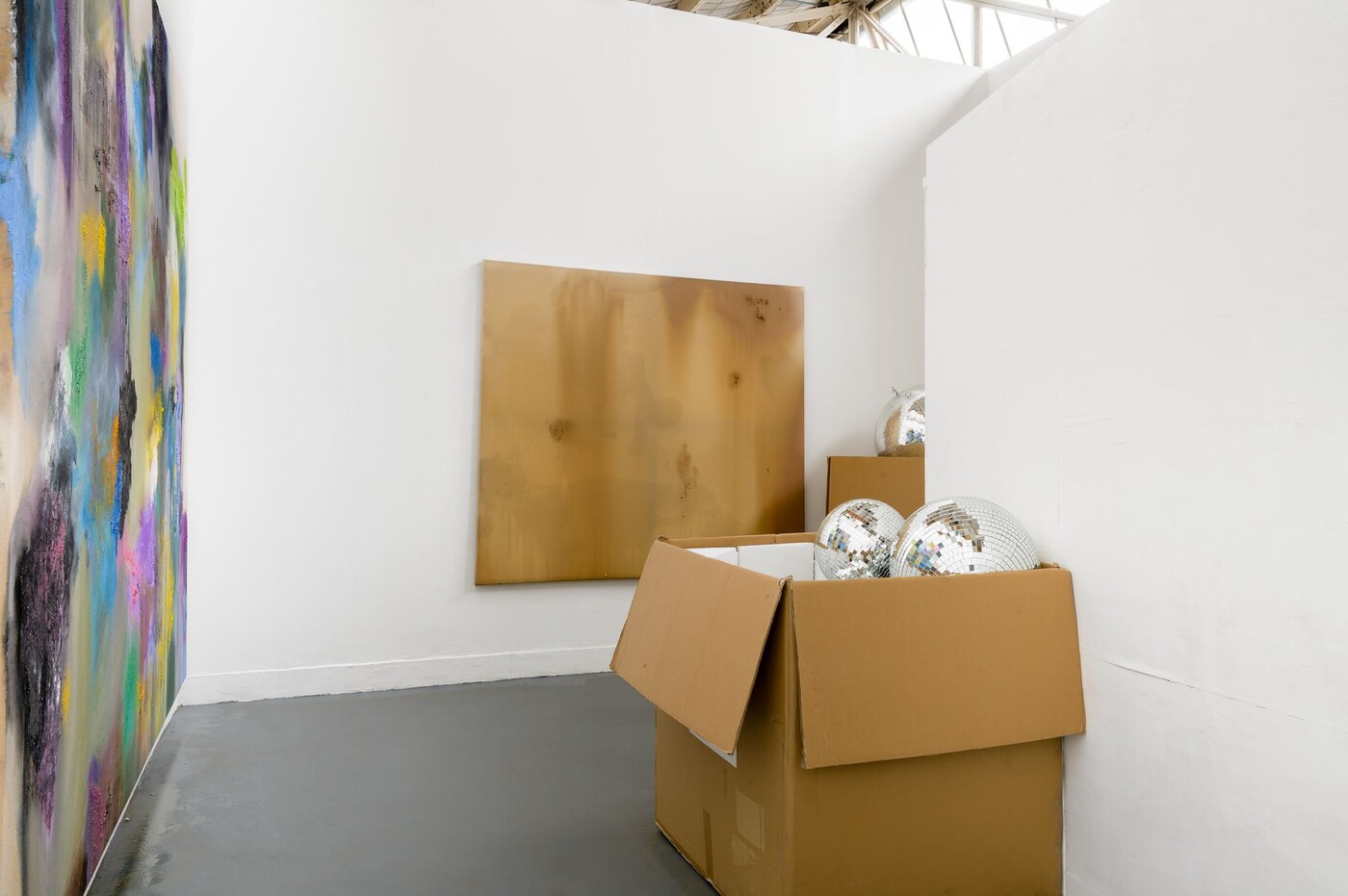
Krum and Miller have synthesised incompatible spaces—the academy, the gallery, the home, and the artwork—into a “single real place.” But it is transitory. Once the grad show finishes, this heterotopia will also end. As the title of one of these works suggests, Miller’s assemblages show us How to Wed a Parallax. Insofar as every element functions as a discrete entity, this fleeting heterotopia stays bound to the conditions of its own production, much like the contemporary artist is bound to the academy and the gallery system that they must necessarily strive to surpass. Krum and Miller recognise that, despite being indexed by contradiction, artists must continue to create their own galleries against galleries. The exhibition therefore is both localised and universalised: it can (and will be) repeated in infinitely variable iterations. What will Krum and Miller’s next moves be? Après nous, le deluge.
Camille Orel is a writer based in Naarm/ Melbourne. She recently graduated a Bachelor Degree of Arts (majoring in Art History) at the University of Melbourne.
